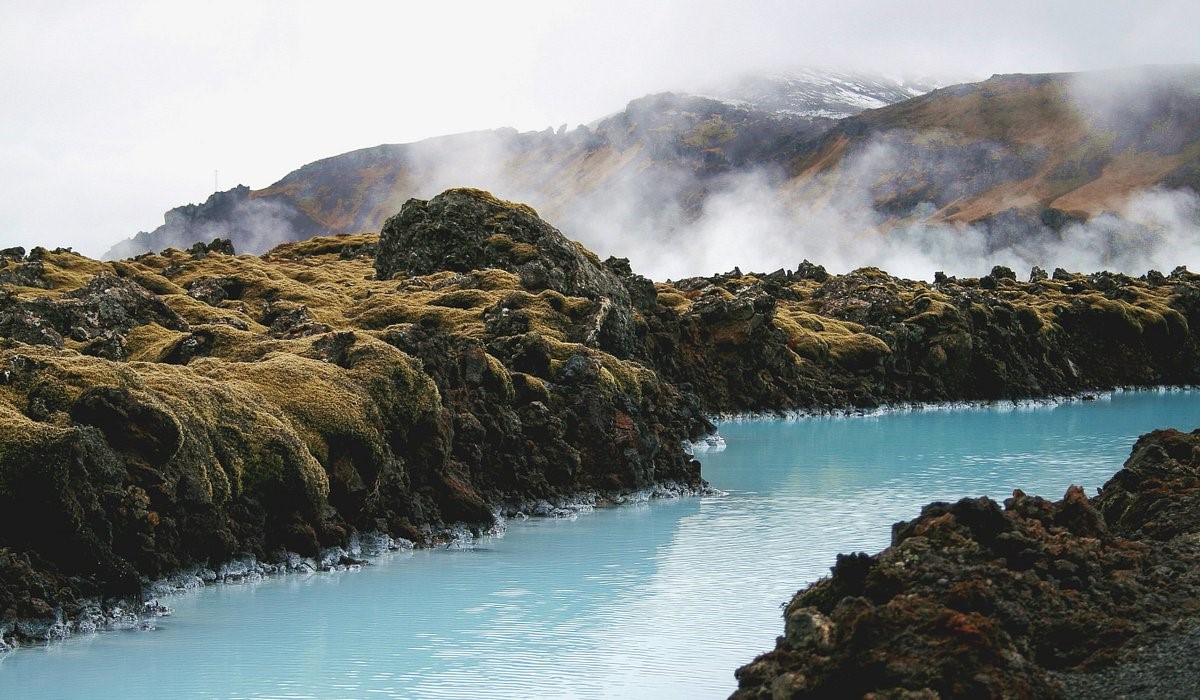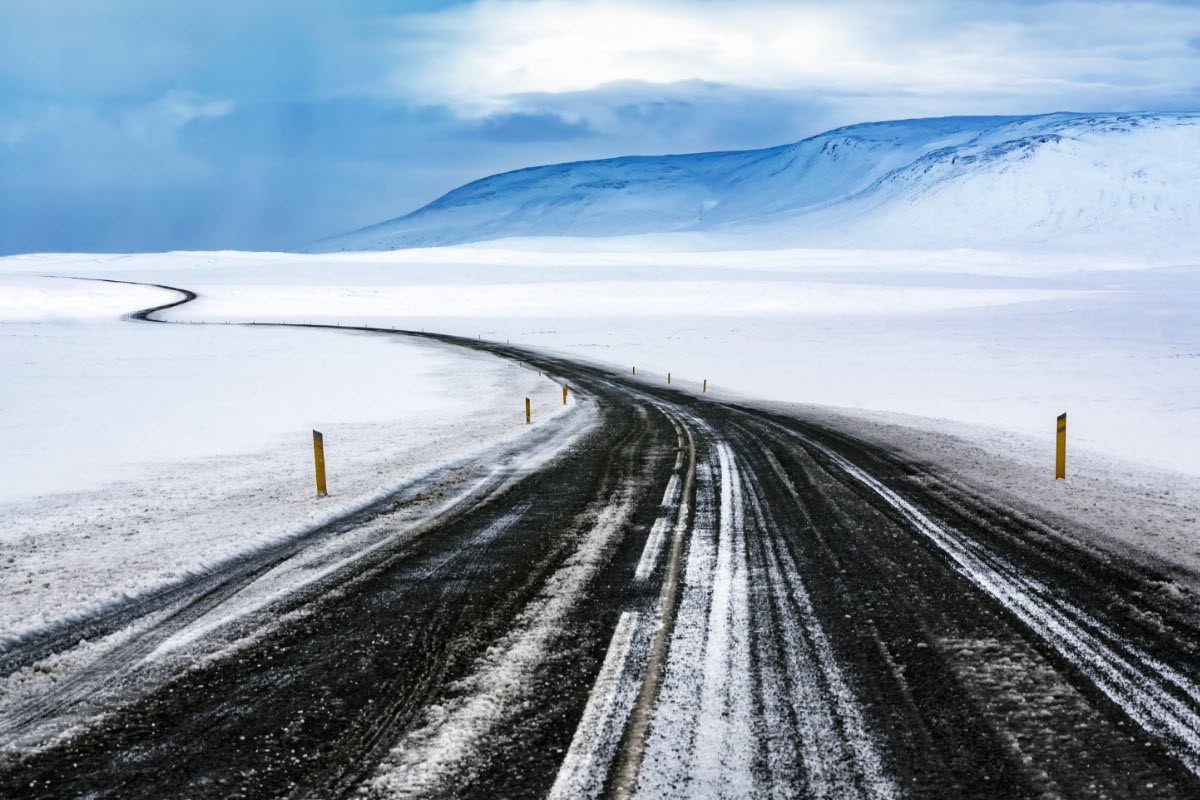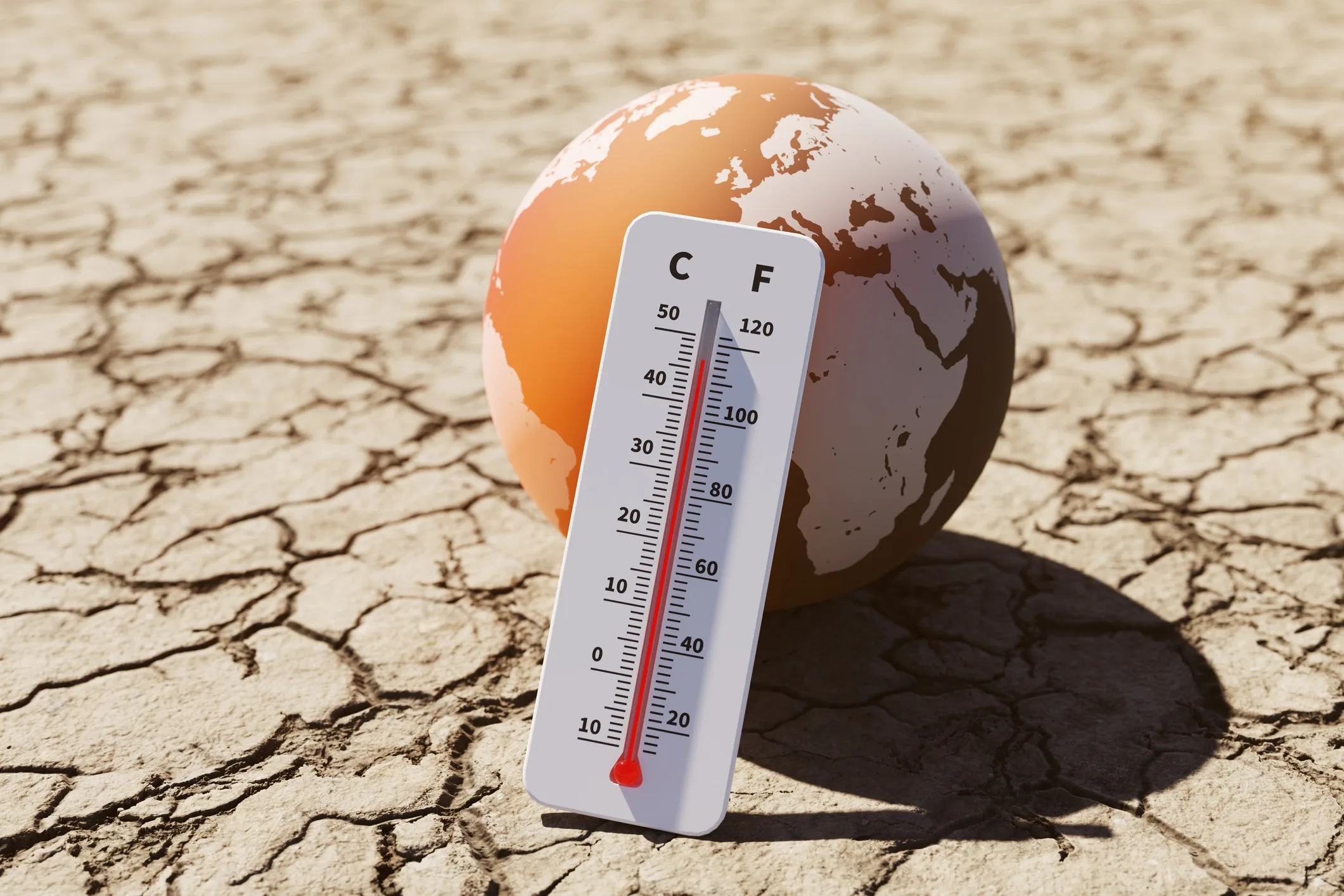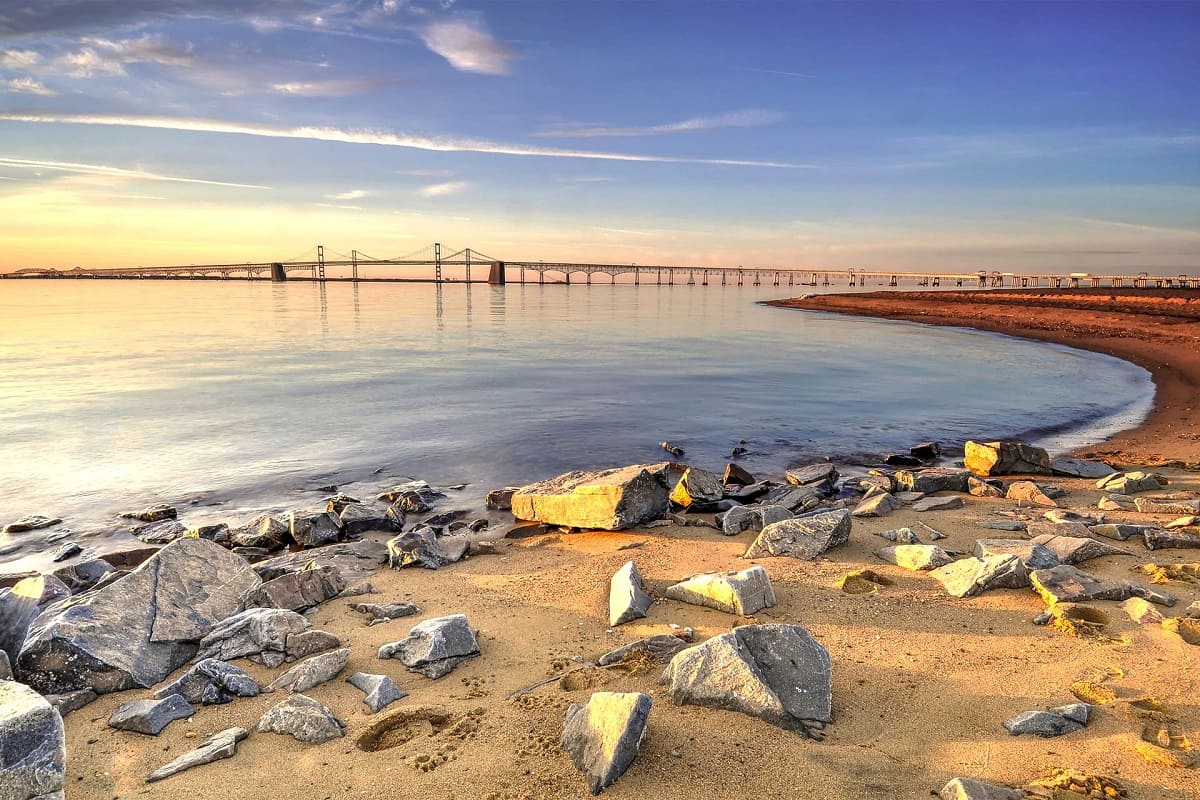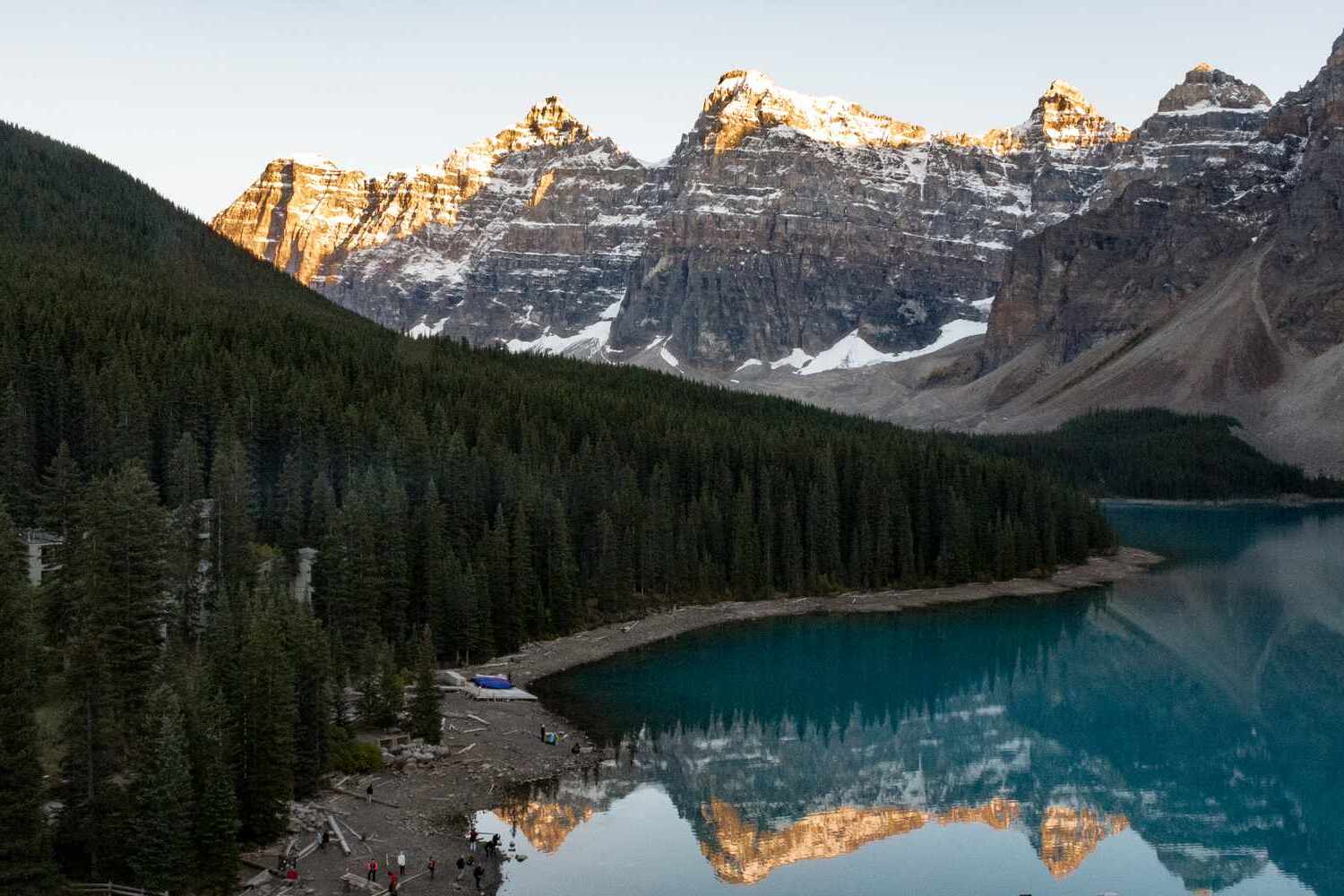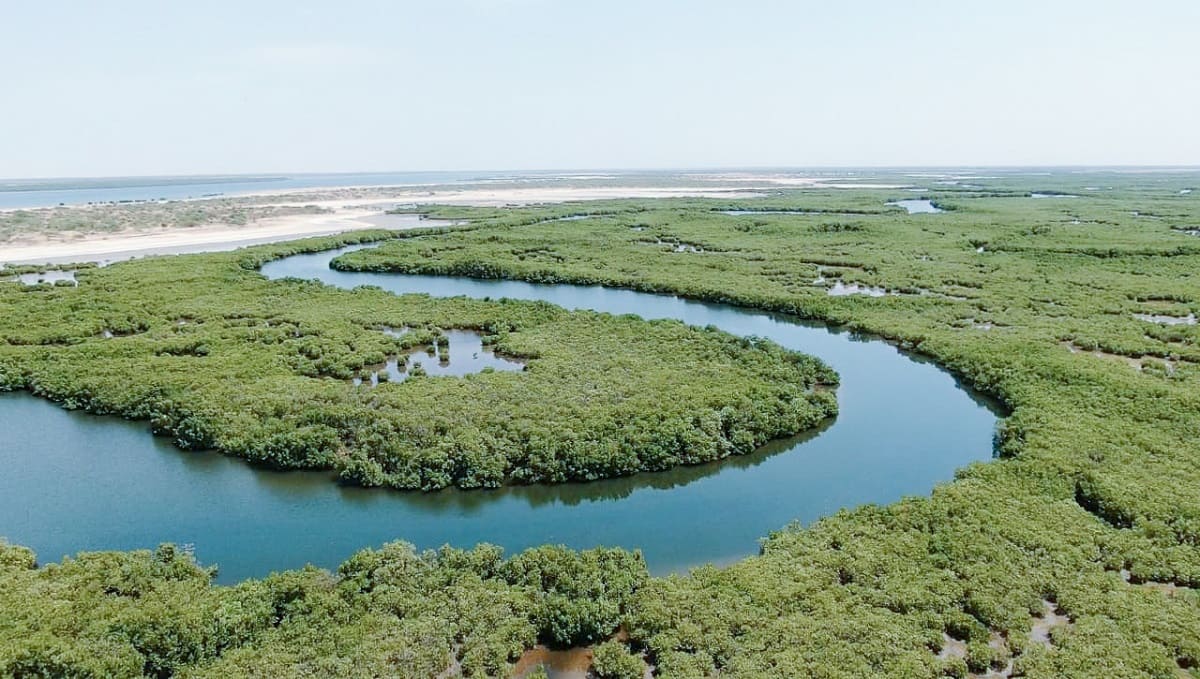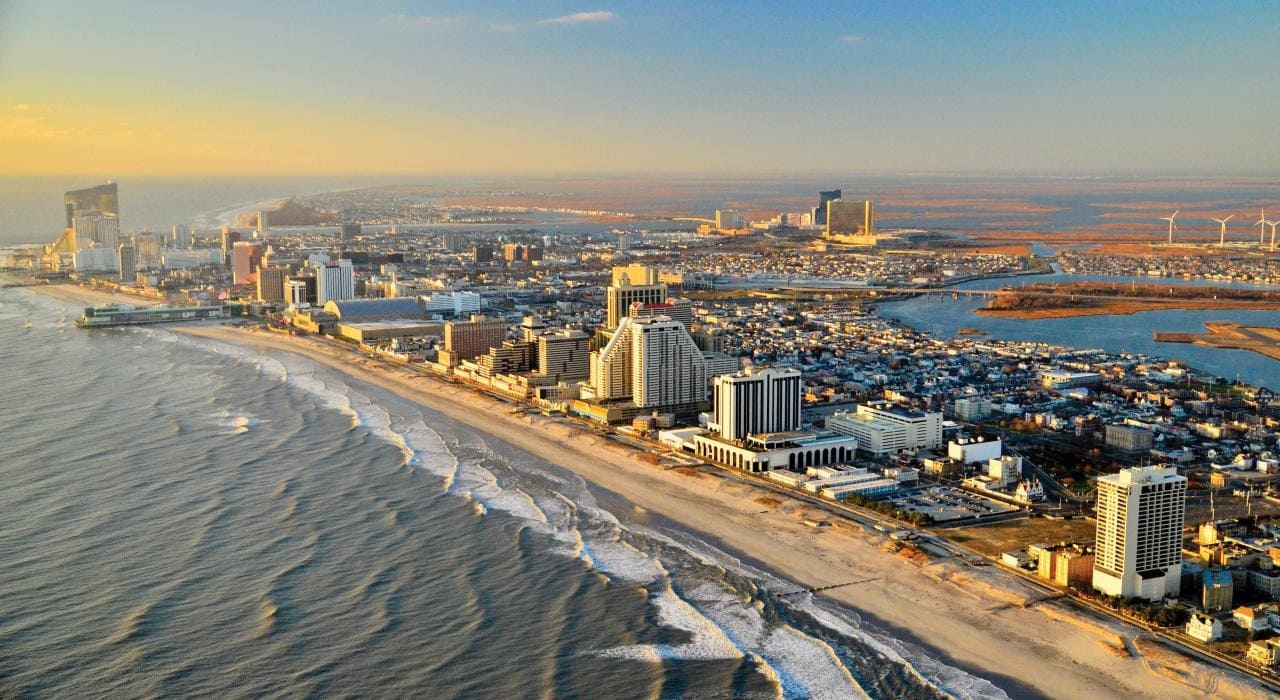Home>Weather and Climate>Monthly Temperature In Iceland: A Comprehensive Guide
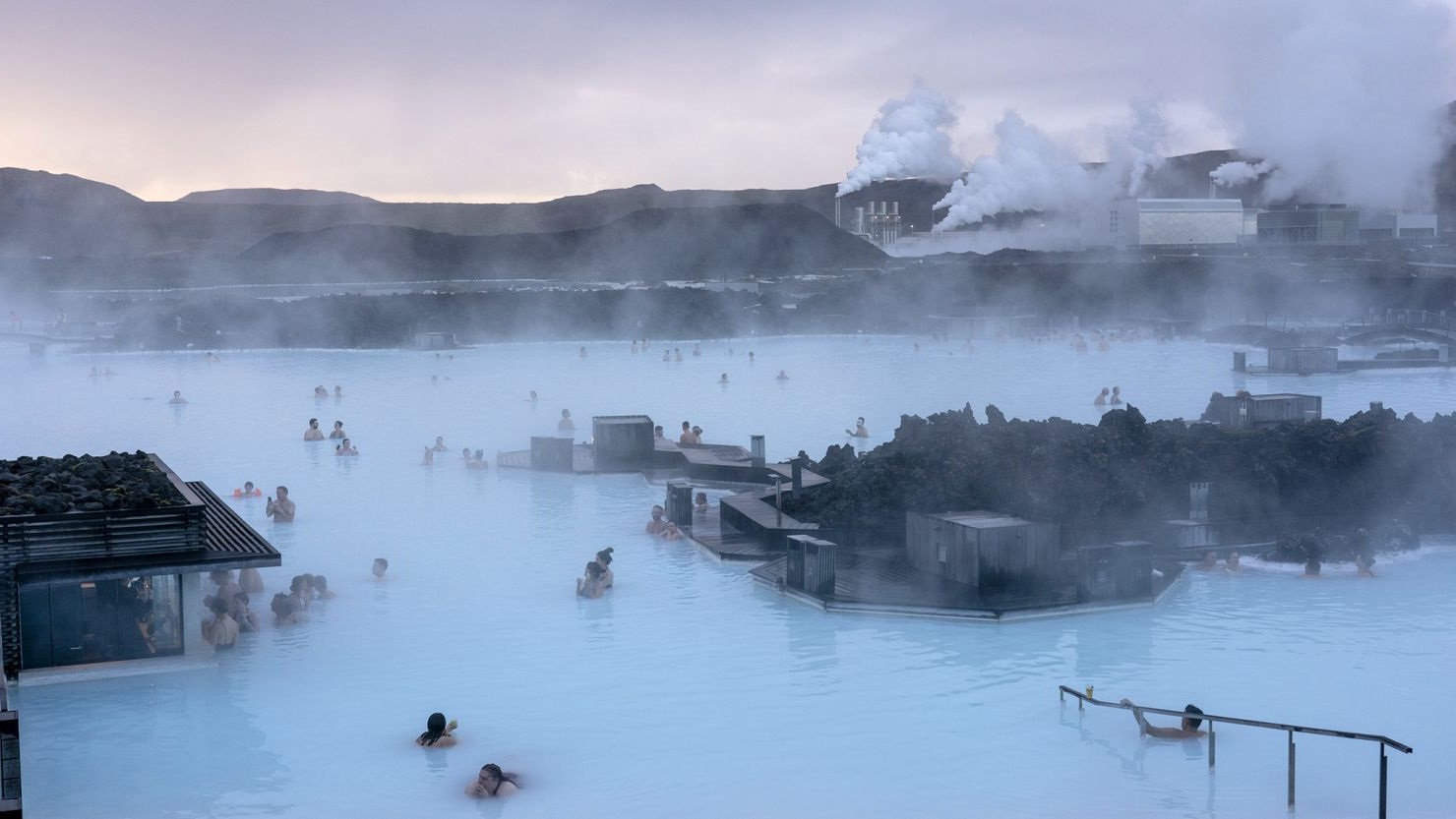

Weather and Climate
Monthly Temperature In Iceland: A Comprehensive Guide
Published: April 3, 2024
Discover the monthly temperature variations in Iceland with our comprehensive guide. Learn about the weather and climate to plan your trip effectively.
(Many of the links in this article redirect to a specific reviewed product. Your purchase of these products through affiliate links helps to generate commission for Temperatures.com, at no extra cost. Learn more)
Table of Contents
Introduction
Welcome to the enchanting world of Iceland, where the weather and climate are as diverse and captivating as the landscape itself. Whether you're planning a visit or simply intrigued by the country's meteorological marvels, understanding Iceland's monthly temperature variations is essential for making the most of your experience. From the ethereal glow of the midnight sun in summer to the mesmerizing dance of the Northern Lights in winter, Iceland's climate shapes the rhythm of life on this extraordinary island.
As we delve into the intricate tapestry of Iceland's weather patterns, you'll gain valuable insights into the factors that influence monthly temperatures, the regional variations across the country, and the seasonal fluctuations that define each month. Whether you're a nature enthusiast, an adventure seeker, or a curious traveler, this comprehensive guide will equip you with the knowledge to navigate Iceland's diverse climate with confidence.
Prepare to embark on a journey through the ebb and flow of Iceland's monthly temperature, uncovering the nuances that make each season unique. From the crisp chill of January to the balmy embrace of July, each month offers a distinct experience, beckoning you to explore the wonders of this extraordinary land. So, fasten your seatbelt and get ready to unravel the captivating tale of Iceland's monthly temperature variations.
Read more: Iceland Weather: Monthly Climate Guide
Understanding Iceland's Climate
Iceland's climate is a captivating mosaic of contrasts, shaped by its unique geographical position and natural features. Situated at the confluence of the North Atlantic and Arctic Oceans, Iceland experiences a maritime climate with cool summers and relatively mild winters. The island's proximity to the Arctic Circle infuses its climate with a touch of polar influence, contributing to the mesmerizing interplay of light and darkness throughout the year.
The Gulf Stream, a powerful ocean current, exerts a profound influence on Iceland's climate, bestowing the island with milder temperatures than its latitude would suggest. This maritime influence brings about relatively stable and moderate temperatures, creating a climate that is distinct from other regions at similar latitudes. However, the weather in Iceland is notoriously unpredictable, with rapid changes and a propensity for sudden shifts in conditions.
Iceland's diverse topography further enriches its climate, with rugged mountains, glaciers, geothermal areas, and coastal plains all contributing to localized variations in weather patterns. The presence of glaciers, such as Vatnajökull, Europe's largest ice cap, significantly impacts the climate, influencing temperature and precipitation patterns in the surrounding areas.
The island's volcanic activity also plays a pivotal role in shaping its climate. Geothermal phenomena, including hot springs, geysers, and volcanic vents, contribute to the unique microclimates found in various regions of Iceland. These geothermal features not only add a touch of otherworldly allure to the landscape but also influence local weather conditions, creating pockets of warmth amid the island's cool climate.
Iceland's climate is characterized by a symphony of natural elements, from the gentle whispers of ocean breezes to the raw power of Arctic winds. Understanding the intricacies of this climate is essential for anyone seeking to explore the island's wonders, as it provides valuable insights into the rhythm of life in this captivating land. Whether you're drawn to the ethereal glow of the midnight sun or the enchanting dance of the Northern Lights, Iceland's climate sets the stage for a mesmerizing journey through the interplay of light, temperature, and natural forces.
In the next section, we will delve into the factors that influence Iceland's monthly temperature, unraveling the nuances that define each month and region. Join us as we embark on a captivating exploration of Iceland's monthly temperature variations, gaining a deeper understanding of the island's climate tapestry.
Factors Affecting Monthly Temperature
The monthly temperature variations in Iceland are influenced by a myriad of factors, each contributing to the intricate tapestry of the island's climate. Understanding these factors is essential for unraveling the nuances that define the temperature fluctuations experienced throughout the year.
-
Latitude and Geographical Location: Iceland's proximity to the Arctic Circle significantly impacts its monthly temperature variations. The angle at which sunlight reaches the Earth's surface varies with latitude, leading to pronounced seasonal changes in temperature. During the summer months, the high latitude results in extended daylight hours, contributing to milder temperatures. Conversely, the winter months experience shorter days and reduced solar energy, leading to cooler temperatures.
-
Oceanic Influence: The presence of the North Atlantic Ocean and the influence of the Gulf Stream play a pivotal role in shaping Iceland's climate. The maritime influence moderates temperature extremes, resulting in relatively stable and milder conditions compared to other regions at similar latitudes. The Gulf Stream, in particular, brings warm waters from the Gulf of Mexico, exerting a significant impact on Iceland's climate and contributing to its relatively mild winters.
-
Topography and Elevation: Iceland's diverse topography, characterized by mountains, glaciers, and coastal plains, contributes to localized variations in temperature. Higher elevations generally experience cooler temperatures, while coastal areas benefit from the moderating influence of the ocean. The presence of glaciers, such as Vatnajökull, influences temperature patterns in the surrounding regions, creating distinct microclimates.
-
Volcanic Activity and Geothermal Features: Iceland's volcanic activity and geothermal phenomena, including hot springs and geysers, contribute to localized variations in temperature. Geothermal areas create pockets of warmth, influencing temperature patterns in specific regions. The release of geothermal heat can lead to temperature differentials, adding a unique dimension to Iceland's climate.
-
Wind Patterns: The interplay of wind patterns, including the influence of polar winds and westerly winds, impacts temperature distribution across the island. Arctic winds can bring cooler air masses, particularly during the winter months, while westerly winds may contribute to milder conditions.
By considering these factors, we gain a deeper appreciation for the intricate interplay of natural elements that shape Iceland's monthly temperature variations. The next section will delve into the average monthly temperature in different regions, providing insights into the nuanced climate patterns across the island. Join us as we unravel the captivating tale of Iceland's diverse temperature landscape, gaining a deeper understanding of the factors that define each month's climate tapestry.
Average Monthly Temperature in Different Regions
Iceland's diverse topography and unique climatic influences give rise to distinct temperature patterns across different regions of the island. From the cool coastal areas to the highland expanses, each region offers a unique perspective on Iceland's monthly temperature variations. Understanding these temperature nuances is essential for anyone seeking to explore the island's natural wonders and plan their visit accordingly.
Coastal Regions
The coastal regions of Iceland, including areas along the southern and western coasts, experience relatively milder temperatures compared to inland areas. The moderating influence of the ocean, coupled with the impact of the Gulf Stream, contributes to more stable and moderate climate conditions. During the summer months, coastal regions benefit from refreshing sea breezes, creating pleasant conditions for outdoor activities and exploration. In contrast, the winter months bring cool but not extreme temperatures, making the coastal areas more hospitable than their inland counterparts.
Inland and Highland Areas
Inland and highland areas of Iceland, characterized by rugged terrain and elevated plateaus, exhibit cooler temperatures, especially during the winter months. The influence of higher elevations contributes to a more pronounced seasonal contrast, with colder winters and cooler summers. The presence of glaciers and ice caps in these regions further impacts the temperature, creating unique microclimates that are distinct from the coastal areas. Visitors to the inland and highland areas should be prepared for cooler temperatures, particularly at higher elevations, and be mindful of the potential for rapid weather changes.
Geothermal Regions
Iceland's geothermal areas, such as the famed Golden Circle, offer a fascinating contrast in temperature compared to other regions. The presence of geysers, hot springs, and volcanic activity creates pockets of warmth amid the island's cool climate. Visitors to these regions can experience the unique sensation of standing in a geothermal area, where the earth's natural heat provides a stark contrast to the surrounding environment. The temperature differentials in these areas add a captivating dimension to Iceland's climate tapestry, inviting exploration and discovery.
Northern and Eastern Regions
The northern and eastern regions of Iceland, including areas around Akureyri and Egilsstaðir, experience temperature patterns influenced by their geographical position and proximity to the Arctic Circle. These regions encounter cooler temperatures, particularly during the winter months, and may also witness more pronounced seasonal variations. The interplay of Arctic winds and oceanic influences contributes to the temperature dynamics in these areas, shaping the climate patterns that define each month.
By gaining insights into the average monthly temperature variations across different regions of Iceland, visitors can tailor their experiences to align with the climate nuances of each area. Whether seeking the milder coastal conditions, the cooler highland landscapes, or the warmth of geothermal regions, understanding the temperature patterns enriches the journey through Iceland's diverse and captivating terrain.
Seasonal Variations in Temperature
Iceland's seasonal variations in temperature paint a mesmerizing portrait of the island's ever-changing climate. From the frost-kissed embrace of winter to the sun-drenched days of summer, each season brings forth a distinct tapestry of temperature patterns, shaping the rhythm of life across the land of fire and ice.
Winter (December – February)
Winter casts its enchanting spell across Iceland, adorning the landscape with a glistening blanket of snow and ice. The months of December through February usher in cooler temperatures, particularly in the inland and northern regions, where the influence of Arctic winds and reduced daylight hours creates a wintry ambiance. Coastal areas, benefiting from the moderating influence of the ocean, experience milder conditions, offering a contrast to the cooler inland expanses. The average temperatures range from -1°C to 3°C, creating a captivating winter wonderland that beckons travelers to witness the ethereal beauty of Iceland's icy landscapes.
Spring (March – May)
As the grip of winter loosens its hold, Iceland awakens to the gentle embrace of spring. The months of March through May bring about a gradual transition in temperature, with the landscape undergoing a remarkable transformation. Coastal regions experience milder temperatures, while inland areas witness the gradual thawing of snow and ice. The average temperatures range from 0°C to 7°C, signaling the arrival of a vibrant season characterized by budding flora and the promise of renewal. Spring in Iceland offers a captivating blend of crisp air, burgeoning greenery, and the lingering allure of snow-capped peaks.
Summer (June – August)
Summer unfolds in a symphony of warmth and light, casting a luminous glow across Iceland's breathtaking vistas. The months of June through August herald the arrival of milder to warmer temperatures, with coastal regions basking in the balmy embrace of the midnight sun. The average temperatures range from 9°C to 14°C, creating ideal conditions for outdoor exploration, hiking, and reveling in the awe-inspiring beauty of Iceland's natural wonders. Summer in Iceland is a time of endless daylight, where the sun-kissed landscapes beckon visitors to immerse themselves in the boundless splendor of the island's pristine wilderness.
Autumn (September – November)
As summer gracefully yields to autumn, Iceland undergoes a captivating transformation, cloaking the land in a tapestry of golden hues. The months of September through November bring about a gradual cooling of temperatures, signaling the onset of the island's fall season. Coastal regions experience milder conditions, while inland areas witness the gradual transition to cooler temperatures. The average temperatures range from 3°C to 9°C, creating a captivating backdrop for witnessing nature's transition as the landscape prepares for the arrival of winter. Autumn in Iceland is a time of breathtaking beauty, where the interplay of light and color paints a mesmerizing portrait of the island's ever-changing climate.
As the seasons ebb and flow, Iceland's temperature variations weave a captivating tale of natural beauty and transformation, inviting visitors to embrace the ever-changing rhythms of the island's climate. Whether captivated by the frosty allure of winter or the sun-drenched embrace of summer, each season offers a unique perspective on Iceland's mesmerizing climate tapestry.
Impact of Temperature on Tourism and Activities
The temperature in Iceland exerts a profound influence on the tourism landscape and the spectrum of activities available to visitors throughout the year. The diverse climate patterns, ranging from the cool embrace of winter to the balmy allure of summer, shape the experiences and adventures that await travelers on this captivating island.
During the winter months, Iceland's cooler temperatures create an enchanting backdrop for a host of unique activities. The presence of snow and ice transforms the landscape into a winter wonderland, offering opportunities for exhilarating experiences such as glacier hiking, ice cave exploration, and the chance to witness the mesmerizing dance of the Northern Lights. The allure of winter draws visitors seeking the ethereal beauty of Iceland's icy landscapes and the thrill of engaging in cold-weather adventures.
As the temperature gradually warms during the spring season, Iceland undergoes a remarkable transformation, signaling the onset of a vibrant period characterized by budding flora and the promise of renewal. Spring brings forth a host of activities, including birdwatching, hiking amidst blossoming landscapes, and the opportunity to witness the cascading beauty of Iceland's waterfalls as the snowmelt fuels their majestic flow. The milder temperatures create ideal conditions for outdoor exploration, allowing visitors to immerse themselves in the rejuvenating ambiance of the island's natural wonders.
Summer in Iceland unfolds in a symphony of warmth and light, casting a luminous glow across the breathtaking vistas. The balmy temperatures of summer create an ideal setting for a myriad of activities, including hiking along scenic trails, exploring volcanic landscapes, and embarking on whale-watching excursions along the coast. The extended daylight hours of the midnight sun offer ample time for outdoor adventures, from kayaking in tranquil fjords to reveling in the awe-inspiring beauty of Iceland's pristine wilderness.
As autumn gracefully unfolds, Iceland undergoes a captivating transition, cloaking the land in a tapestry of golden hues. The cooler temperatures of autumn create a captivating backdrop for activities such as horseback riding amidst fall foliage, exploring geothermal areas, and witnessing the breathtaking spectacle of migrating birds. The interplay of light and color during the autumn season paints a mesmerizing portrait of Iceland's ever-changing climate, offering visitors a unique perspective on the island's natural beauty.
In essence, the temperature variations in Iceland not only shape the climate tapestry but also influence the spectrum of activities and experiences available to visitors. Whether captivated by the frosty allure of winter or the sun-drenched embrace of summer, each season offers a distinct invitation to explore the wonders of Iceland's diverse and captivating terrain.
Tips for Dressing and Packing for Different Months
Preparing for a journey to Iceland involves careful consideration of the diverse climate patterns that define each month. Whether you're embarking on a winter adventure or basking in the glow of the midnight sun during summer, understanding the appropriate attire and packing essentials is essential for a comfortable and enjoyable experience.
Winter (December – February)
The winter months in Iceland bring cooler temperatures and the potential for snowfall, creating a picturesque winter wonderland. When packing for this season, it's crucial to prioritize warmth and protection against the elements. Opt for insulated, waterproof outerwear, including a sturdy winter coat, waterproof boots, and thermal layers. Accessories such as gloves, a hat, and a scarf are essential for shielding against the cold, while thermal socks and sturdy footwear provide traction on icy surfaces. Additionally, packing hand warmers and a reliable camera to capture the enchanting winter landscapes is highly recommended.
Spring (March – May)
As Iceland transitions into spring, milder temperatures and the gradual emergence of flora characterize this season. When packing for spring, consider versatile layers that can adapt to changing conditions. A waterproof and windproof jacket, along with breathable layers, provides flexibility for fluctuating temperatures. Comfortable hiking shoes are ideal for exploring the awakening landscapes, while packing a compact umbrella and a camera to capture the vibrant scenery is advisable. Additionally, incorporating binoculars for birdwatching and nature observation enhances the springtime experience.
Summer (June – August)
The summer months in Iceland offer milder to warmer temperatures, creating an ideal setting for outdoor exploration. When packing for summer, prioritize lightweight, breathable clothing suitable for hiking, sightseeing, and outdoor activities. A mix of short-sleeved shirts, long-sleeved tops, and a waterproof jacket for unexpected showers ensures comfort and versatility. Comfortable walking shoes or hiking boots are essential for exploring the diverse terrain, while packing sunscreen, sunglasses, and a brimmed hat provides protection against the extended daylight hours. Don't forget to include a swimsuit for indulging in Iceland's geothermal pools and hot springs.
Autumn (September – November)
Autumn in Iceland brings cooler temperatures and the captivating transition of the landscape into a tapestry of golden hues. When packing for autumn, focus on layering to accommodate the fluctuating temperatures. A mix of long-sleeved tops, a warm sweater, and a waterproof jacket offers adaptability for outdoor activities. Comfortable walking shoes with good traction are essential for navigating the terrain, while packing a camera to capture the stunning fall foliage and migrating birds enriches the autumn experience. Additionally, incorporating a compact backpack for day trips and nature excursions is highly recommended.
By tailoring your packing list to align with the temperature variations of each season, you can ensure a comfortable and enjoyable experience while exploring the captivating landscapes and natural wonders of Iceland. Whether embarking on a cold-weather adventure or reveling in the warmth of summer, thoughtful packing and dressing considerations enhance the journey through Iceland's diverse and captivating terrain.
Conclusion
In conclusion, Iceland's monthly temperature variations offer a captivating glimpse into the island's ever-changing climate tapestry. From the ethereal glow of the midnight sun in summer to the enchanting dance of the Northern Lights in winter, each month unfolds with its own unique blend of temperature patterns, shaping the experiences and adventures that await visitors. By unraveling the factors that influence monthly temperatures, exploring the average temperature variations across different regions, and delving into the seasonal nuances, we gain a deeper appreciation for the captivating interplay of natural elements that define Iceland's climate.
The diverse climate patterns in Iceland not only influence the rhythm of life across the island but also shape the spectrum of activities and experiences available to visitors throughout the year. Whether captivated by the frosty allure of winter or the sun-drenched embrace of summer, each season offers a distinct invitation to explore the wonders of Iceland's diverse and captivating terrain. The temperature variations also play a pivotal role in shaping the tourism landscape, with each season presenting unique opportunities for cold-weather adventures, vibrant springtime explorations, sun-kissed summer escapades, and the captivating transition of autumn.
Furthermore, understanding the appropriate attire and packing essentials for each season is essential for ensuring a comfortable and enjoyable experience while exploring Iceland's natural wonders. By tailoring packing lists to align with the temperature variations of each month, visitors can immerse themselves in the captivating landscapes and diverse activities that define each season.
As we bid farewell to this comprehensive exploration of Iceland's monthly temperature variations, we are reminded of the island's enduring allure, shaped by the interplay of light, temperature, and natural forces. Whether planning a visit or simply captivated by the island's meteorological marvels, the knowledge gained from this guide equips travelers with the insights to navigate Iceland's diverse climate with confidence, embracing the ever-changing rhythms of the island's temperature landscape.
In essence, Iceland's monthly temperature variations offer a captivating journey through the ebb and flow of the island's climate, inviting visitors to embrace the ever-changing rhythms of this extraordinary land. Whether drawn to the cool embrace of winter, the vibrant awakening of spring, the sun-kissed landscapes of summer, or the captivating transition of autumn, each season beckons travelers to explore the wonders of Iceland's diverse and captivating terrain.
